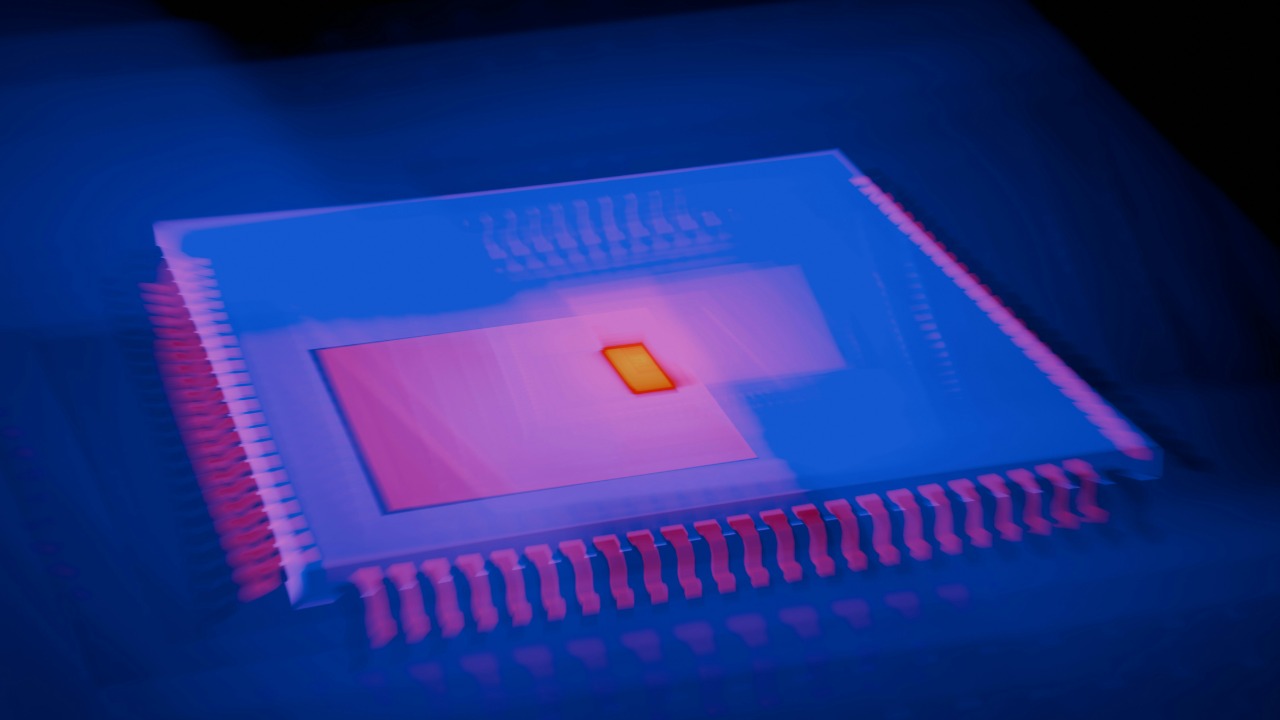
In a fortuitous twist of scientific serendipity, researchers at the University of Sydney have inadvertently developed a “rainbow-on-a-chip” device. This compact photonic structure has the potential to revolutionize the energy consumption of AI hardware by trapping and manipulating light across the visible spectrum. The unexpected breakthrough, which occurred during experiments for nanoscale lasers, could help address the escalating power demands of AI models, which are currently on par with those of small nations.
The Accidental Birth of Rainbow-on-a-Chip
The researchers were initially working on fabricating nanoscale structures for laser applications. However, an unexpected mishap during material deposition led to the formation of a device with unique light-manipulating properties. This serendipitous discovery was a result of a fabrication error rather than a planned outcome, underscoring the unpredictable nature of scientific innovation.
Initial observations under microscopy revealed a rainbow-like dispersion of light within the device. Intrigued by this unusual phenomenon, the researchers decided to delve deeper into its potential applications. The rainbow-on-a-chip, as it was later dubbed, opened up a new avenue of exploration in the field of photonics.
Understanding the Physics Behind the Device
At the heart of the rainbow-on-a-chip device is a nanostructured silicon core that creates waveguides. These waveguides bend and store light wavelengths separately, effectively mimicking the function of a prism on a microscopic scale. This core mechanism allows the device to manipulate light across the visible spectrum with high efficiency, making it a promising candidate for integration into electronic circuits.
The device also utilizes photonic crystals to confine light without energy loss. This is akin to how natural rainbows are formed, but engineered on a much smaller scale for chip integration. The combination of these optical properties could potentially revolutionize the way we process information in the future.
Addressing AI’s Energy Crisis
Traditional AI relies heavily on electron-based computing, which generates a significant amount of heat and requires substantial power. The rainbow-on-a-chip, on the other hand, uses an optical approach that could drastically reduce these energy demands. By manipulating light signals instead of electrons, the device could perform AI tasks like pattern recognition with far less energy consumption.
This development comes at a crucial time, as global AI energy projections continue to rise. Innovations like the rainbow-on-a-chip could help mitigate the environmental impacts of data centers, which are increasingly being used to power AI models.
From Lab Discovery to Practical Integration
While the accidental discovery of the rainbow-on-a-chip is exciting, there are still challenges to overcome before it can be mass-produced in semiconductor fabs. The device’s design needs to be refined for compatibility with existing AI hardware, such as GPUs and TPUs. This will require a significant amount of research and development, as well as interdisciplinary collaboration.
The research team is optimistic about the potential for commercialization, but caution that it will take time to fully realize the device’s capabilities. They are currently focused on improving the device’s efficiency and scalability, with the ultimate goal of integrating it into mainstream AI hardware.
Broader Impacts on Photonics and Computing
The rainbow-on-a-chip represents a significant advancement in photonic technology. By enabling compact, multi-wavelength processing, it goes beyond current photonic tech like silicon photonics. This could have far-reaching implications for fields like telecommunications and sensing, where efficient light control is crucial.
However, as with any technological advancement, there are ethical considerations to take into account. It’s important to ensure that energy-efficient tech like the rainbow-on-a-chip doesn’t exacerbate digital divides, but instead democratizes access to AI capabilities.
Future Research Directions
Looking ahead, the research team plans to test the rainbow-on-a-chip device in real AI workloads. They will be focusing on speed and accuracy metrics to evaluate the device’s performance. There’s also speculation about the potential for hybrid electro-optical systems that combine the chip with conventional processors for hybrid AI architectures.
The initial serendipitous findings have opened up new funding and partnership opportunities to accelerate the development of the rainbow-on-a-chip. As research progresses, we can expect to see more exciting developments in this field.